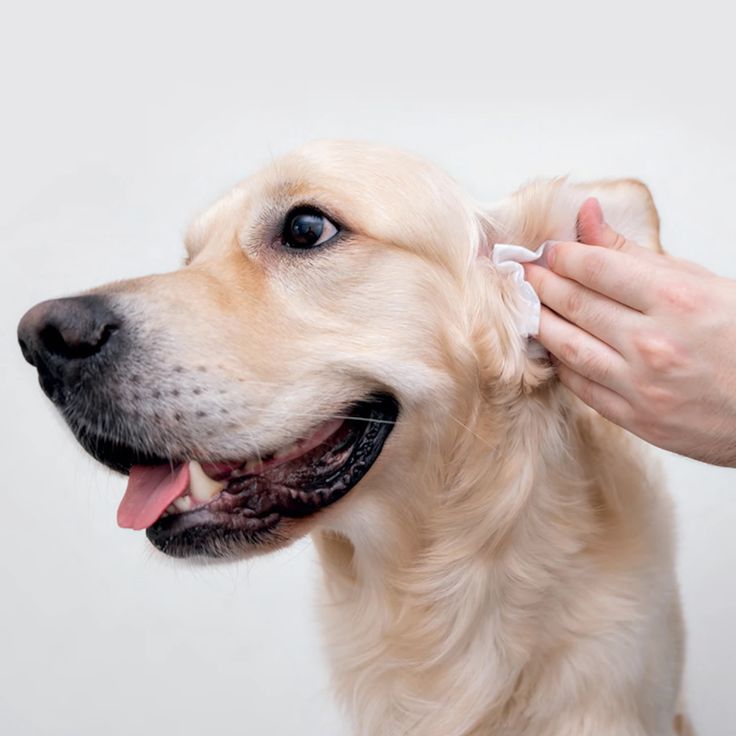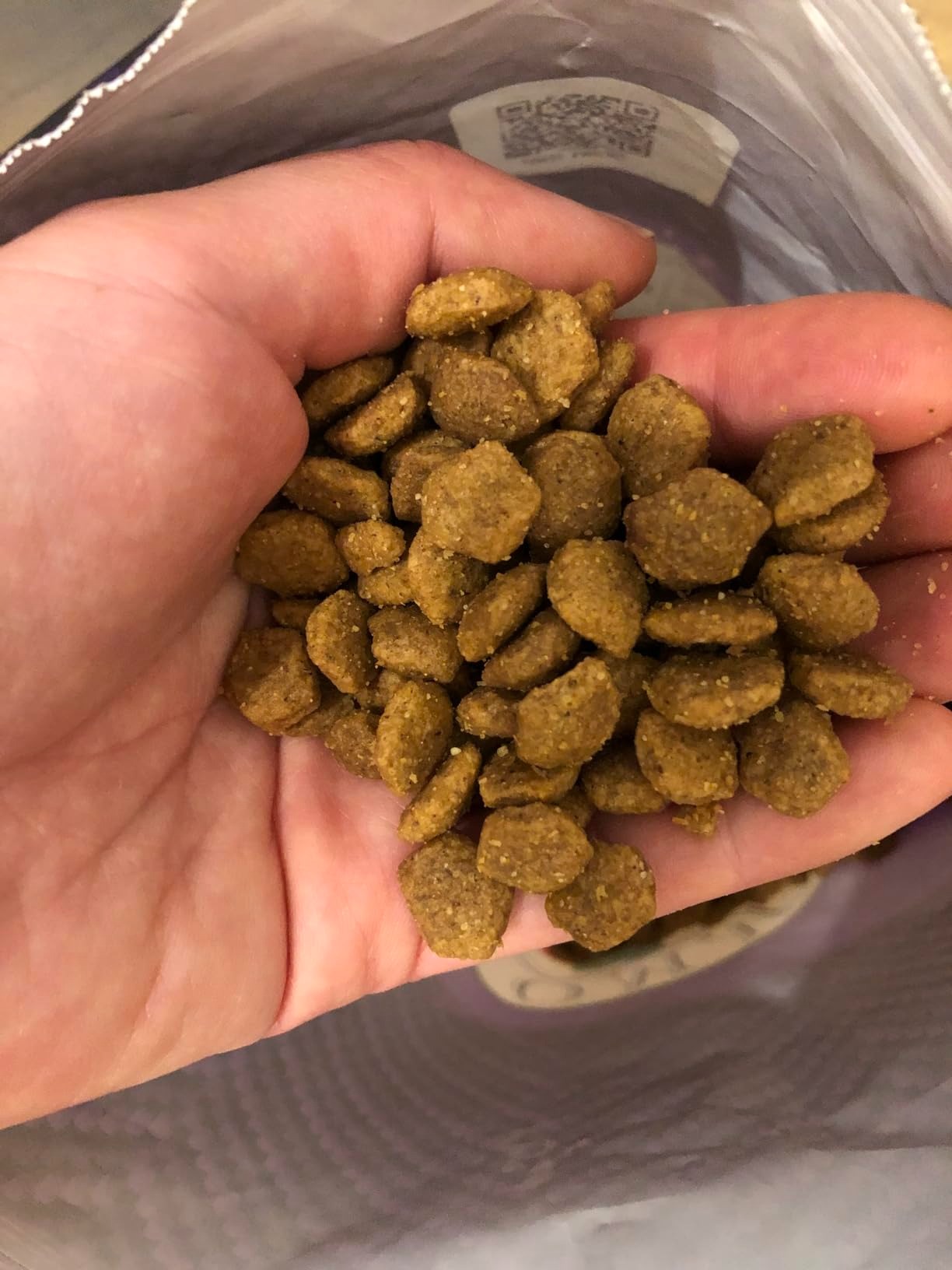Importance of Cleaning Your Pet’s Ears
Keeping your pet ear cleaner is essential for their overall health. Regular ear cleaning helps prevent infections, discomfort, and hearing problems. It also allows pet owners to spot potential issues early.

Benefits of Regular Ear Cleaning
- Prevents Infections: Regular cleaning removes dirt and wax that breed bacteria, reducing the risk of infections.
- Improves Comfort: Clean ears prevent itchiness and irritation, keeping your pet happy.
- Helps Detect Problems Early: It allows you to identify unusual odors, redness, or discharge.
- Reduces Odor: Clean ears contribute to better hygiene, reducing bad smells from your pet’s ears.
Risks of Neglecting Ear Hygiene
- Infections and Pain: Neglect can lead to bacterial or fungal infections, causing discomfort.
- Hearing Loss: Persistent dirt and wax buildup may damage your pet’s hearing over time.
- Chronic Issues: Ignoring ear care can lead to recurring problems requiring long-term treatment.
- Increased Vet Bills: Untreated issues may result in costly veterinary interventions.
Maintaining proper ear hygiene with the right pet ear cleaner ensures your pet stays healthy and comfortable.
Common Signs of Ear Problems in Pets
Observing changes in your pet’s ears is key to spotting issues early. Common signs include unusual behaviors, physical symptoms, and noticeable discomfort. Identifying these signs promptly ensures proper care and prevents complications.
Symptoms of Ear Infections
Excessive Scratching or Pawing
- Common Behavior in Infected Pets: One of the primary signs of an ear infection in pets is excessive scratching or pawing at their ears. Pets instinctively try to relieve discomfort or itchiness by using their paws. This behavior can become obsessive, leading to potential injury or further irritation if not addressed promptly.
- Observational Importance: It’s crucial for pet owners to observe how frequently their pets are scratching. If you notice that your pet is constantly pawing at their ears, it may indicate an underlying issue, necessitating a visit to the veterinarian for further evaluation.
Redness or Swelling
- Visible Signs of Infection: Redness and swelling are often direct indicators of inflammation caused by an ear infection. Infected ears can appear noticeably redder than the surrounding skin, and you may also see swelling in the ear flap or canal.
- Potential for Further Complications: If left untreated, the redness and swelling can worsen, leading to more severe complications such as chronic infections or even hearing loss. Regularly checking your pet’s ears can help catch these signs early.
Unpleasant Odor
- Odor as a Diagnostic Tool: An unpleasant odor emanating from your pet’s ears is a significant warning sign. This odor often suggests the presence of bacterial or yeast infections, which thrive in warm, moist environments like ears.
- Importance of Timely Action: If you notice a strong, foul smell coming from your pet’s ears, it is important to consult a veterinarian promptly. Addressing the infection early can help prevent more extensive health issues.
 Discharge
Discharge
- Types of Discharge: The presence of discharge from your pet’s ears can vary in color and consistency. Yellow or brown discharge is particularly concerning as it can signal an active infection. In some cases, green discharge may indicate a more severe bacterial infection.
- What Discharge Means: The type and amount of discharge can provide important insights into the nature of the infection. Keeping track of any changes in discharge can help your veterinarian make a more accurate diagnosis.
Head Shaking
- Indication of Discomfort: Frequent head shaking in pets is often a sign of discomfort or irritation caused by an ear problem. Pets instinctively shake their heads in an attempt to relieve pressure or discomfort in their ears.
- Potential Underlying Issues: If you observe your pet shaking their head more than usual, it may indicate an ongoing ear infection or other ear-related issues. Monitoring this behavior closely can help determine if a visit to the vet is necessary.
Sensitivity to Touch
- Tenderness in Infected Ears: Pets with ear infections often exhibit sensitivity to touch around their ears. They may flinch, pull away, or resist when you attempt to handle their ears, indicating tenderness.
- Behavioral Changes: This sensitivity can lead to changes in behavior, causing pets to become more withdrawn or irritable. If a pet shows signs of discomfort when you touch their ears, seeking veterinary advice is essential for proper diagnosis and treatment.
Identifying Allergies or Irritations
- Continuous Ear Rubbing: Pets rub their ears on furniture or floors if irritation exists.
- Flaky or Scaly Skin: Allergies can lead to dry, flaky skin inside the ears.
- Hair Loss Around Ears: Irritation or allergic reactions can cause thinning of fur near the ears.
- Itching After Food Changes: Specific food allergies might affect ear health.
- Recurring Symptoms: Persistent irritation may indicate underlying allergies rather than infections.
Being observant will help you act quickly when symptoms occur. Use a suitable pet ear cleaner for effective prevention of allergies or infections.
Types of Pet Ear Cleaners
Choosing the right pet ear cleaner is essential for your pet’s ear hygiene. Different types cater to various needs, ensuring convenience and effectiveness.
Liquid Ear Cleaners
Liquid ear cleaners are popular for deep cleaning and dissolving stubborn wax buildup. They usually come with a nozzle for easy application directly into your pet’s ear canal. These cleaners gently break down ear wax, debris, and dirt, making them ideal for pets prone to infections. Look for formulas that are vet-approved and contain soothing agents like aloe vera for added comfort. Liquid cleaners are suitable for pets with recurring ear issues as they target harder-to-reach areas.
Wipes for Ear Cleaning
Ear cleaning wipes provide a quick and effective way to maintain your pet’s ear hygiene. These pre-moistened wipes are perfect for surface cleaning and removing visible dirt around the ear flap. They are convenient for pets who resist liquid cleaners and are a great option for traveling. Wipes are also hypoallergenic, making them safe for sensitive ears or pets with mild irritation. Ensure they are alcohol-free to prevent dryness and discomfort.
Natural and Hypoallergenic Options
Natural and hypoallergenic ear cleaners are ideal for pets prone to allergies or sensitive skin. These cleaners often include ingredients like chamomile, tea tree oil, and witch hazel, which soothe inflammation and reduce irritation. They are free from harsh chemicals, artificial fragrances, and dyes, making them safer for regular use. Natural ear cleaners also minimize the risk of allergic reactions while promoting long-term ear health.
Each type offers unique benefits, so choose the one that suits your pet’s specific needs and preferences.
Key Factors to Consider When Choosing an Ear Cleaner
Picking the right pet ear cleaner is important for safe and effective ear care. Different factors play a role in ensuring the chosen product suits your pet’s needs. From ingredients to recommendations, getting it right can avoid discomfort and health risks.
Ingredients to Avoid for Safety
- Alcohol-Based Products: Alcohol can dry out your pet’s skin and cause irritation or stinging.
- Artificial Fragrances: These may lead to allergies and discomfort for pets with sensitive skin.
- Harsh Chemicals: Avoid products with sulfates, parabens, or dyes that can cause reactions or inflammation.
- Essential Oils in Excess: While some essential oils can soothe, others in high doses may be harmful to pets.
- Unknown Additives: Ensure the label lists transparent ingredients to avoid unexpected side effects.
Choose ear cleaners with gentle, pet-safe ingredients to prevent problems and ensure comfort.
Choosing Cleaner Based on Pet’s Breed
- Dogs with Large Ears: Breeds like Basset Hounds need cleaning solutions targeting moisture buildup.
- Dogs with Hairy Ear Canals: Breeds like Poodles require cleaners that minimize wax and debris blockage.
- Cats with Sensitive Skin: Hypoallergenic formulas work best for breeds prone to irritation, like Siamese cats.
- Active Outdoor Pets: Pets exposed to dirt need cleaners specifically designed for deep ear cleaning.
- Allergy-Prone Breeds: Use natural ear cleaners that focus on reducing allergies and soothing the skin.
Consider your pet’s specific breed traits when selecting an ear cleaner.
Vet-Recommended Products
- Trusted Formulas: Products with vet endorsement ensure safe and effective use.
- Targeted Cleaning: Vets recommend solutions to address common issues like yeast or bacterial infections.
- Soothing Ingredients: Many vet-recommended products feature calming additives like aloe or chamomile.
- Custom Suggestions: Vets may tailor recommendations based on your pet’s specific conditions and breed type.
Ask your vet for advice to choose the best ear cleaner based on professional insights.
How to Properly Use an Ear Cleaner
Using a pet ear cleaner correctly ensures effective cleaning and prevents discomfort for your pet. Implementing the right steps can make the process smoother and stress-free.
Preparing Your Pet for Ear Cleaning
- Create a Calm Environment: Choose a quiet area to keep your pet relaxed.
- Gather Essentials: Have the ear cleaner, cotton balls or wipes, and treats ready.
- Inspect Ears First: Check for redness, swelling, or discharge before cleaning. Avoid cleaning if the ears are severely inflamed or painful.
- Position Your Pet Comfortably: Gently place your pet in a secure, seated position.
- Reward After Preparing: Offer a treat to ease any anxiety and build positive association.
Step-by-Step Cleaning Process
- Apply the Cleaner: Gently lift your pet’s ear flap and squeeze a few drops into the ear canal.
- Massage the Base: For 20-30 seconds, massage the ear base to loosen debris and wax.
- Wipe Outer Area: Use a cotton ball or wipe to clean visible dirt around the ear flap. Avoid using cotton swabs inside the ear.
- Let Your Pet Shake: Allow your pet to shake their head to expel loosened debris.
- Repeat if Needed: If dirt remains, repeat the steps until the ear appears clean.
Tips to Avoid Injuries or Distress
- Be Gentle: Apply minimal pressure during cleaning and avoid inserting tools into the ear canal.
- Use Pet-Safe Products: Always choose ear cleaners specifically designed for animals.
- Stop if Discomfort Appears: If your pet exhibits pain or distress, halt the process and consult a veterinarian.
- Maintain Consistency: Clean your pet’s ears regularly to prevent severe wax buildup and infections.
- Reward Generously: Reward your pet after cleaning to make the experience less stressful next time.
Proper use of a pet ear cleaner helps maintain ear health and builds trust with your pet.
Maintaining Regular Ear Care Routine
Establishing a consistent ear care routine is vital for your pet’s health. Regular maintenance prevents infections and keeps your pet comfortable. Simple steps can ensure their ears stay clean and free from issues.
Frequency of Ear Cleaning
- Weekly for Active Pets: Clean their ears weekly if they spend a lot of time outdoors.
- Biweekly for Less Active Pets: Pets that stay indoors or are less active need cleaning every two weeks.
- Consult Your Vet: Ask your vet for advice if unsure about the proper frequency.
- Adjust for Breed Needs: Breeds with large or hairy ears may require more frequent cleaning.
- Watch for Dirt Buildup: Increase cleaning if you notice excess dirt or wax.
Routine cleaning based on your pet’s needs helps prevent infections and discomfort.
Monitoring for Recurring Issues
- Check Ears Regularly: Inspect for redness, swelling, or bad odors during cleaning.
- Watch for Head Shaking: Frequent head shaking could indicate discomfort or issues.
- Look Out for Scratching: Excessive scratching signals irritation or infection.
- Track Symptoms After Cleaning: Note if issues persist even after regular cleaning.
- Consult Your Vet if Needed: Tricky cases or recurring symptoms require professional attention.
Being vigilant helps catch problems early, ensuring effective treatment and ongoing ear health.
When to Consult a Veterinarian
Knowing when to visit a veterinarian is essential for maintaining your pet’s ear health. While regular ear cleaning can prevent most issues, some situations require professional care.
Persistent Symptoms After Cleaning
- Unresolved Redness or Swelling: If redness or swelling remains after cleaning, seek veterinary help.
- Consistent Discharge: Continuous yellow, brown, or bloody discharge needs immediate attention.
- Ongoing Odor: A foul smell despite cleaning could signal an untreated infection.
- Frequent Scratching or Shaking: Repeated ear-scratching or head-shaking indicates discomfort or deeper issues.
- Resistance to Touch: Persistent sensitivity or pain when touching the ears requires professional advice.
- No Improvement After Care: If the issue persists despite using a pet-safe ear cleaner, consult a vet.
Severe Infections and Medical Treatments
- Signs of Advanced Infection: Observe for pus-like discharge, intense swelling, or visible sores inside the ear.
- Hearing Loss: Reduced responsiveness to sounds may indicate severe ear damage.
- Foreign Objects: If an item is stuck in your pet’s ear, avoid attempting removal yourself.
- Recurring Problems: Chronic infections or irritations need specialized treatment and examination.
- Underlying Conditions: Allergies or immune disorders may require medical diagnosis and ongoing care.
- Specialist Interventions: Severe cases might involve antibiotic courses, ear drops, or even surgical treatments.
Prompt veterinary consultation ensures your pet receives proper care, avoiding prolonged discomfort or complications.
Conclusion: Keeping Your Pet’s Ears Healthy
In conclusion, choosing the right pet ear cleaner involves understanding your pet’s specific needs, ingredients, and effective cleaning methods. Maintaining your pet’s ear health is essential for their overall well-being.
By regularly checking and cleaning your pet’s ears, selecting safe products, and following professional advice when necessary, you can help prevent discomfort and infections. The freedom to explore, roam, and play is vital for pets, and part of that freedom comes from being healthy and pain-free.
Feel confident in your ability to choose and use the right pet ear cleaner for your beloved companion. Prioritize their health, and enjoy the bond you share with them!












